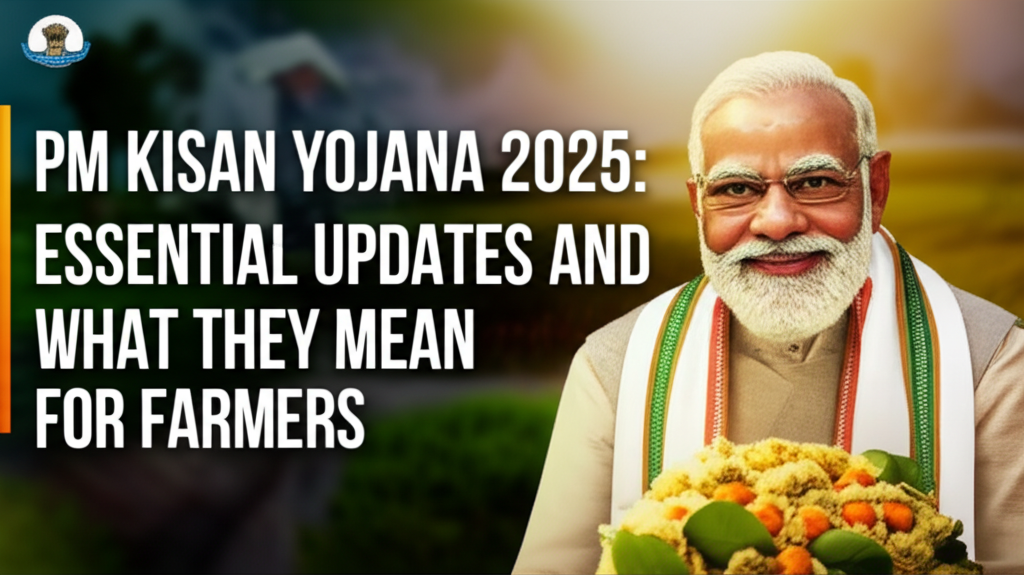Introduction
The PM Kisan Yojana, an initiative launched by the Government of India in February 2019, aims to provide financial support to the country’s farmers. Over the years, this scheme has evolved, adapting to the needs of the agricultural sector in India. In this article, we will delve deep into the updates for the PM Kisan Yojana in 2025, exploring their implications for farmers, the agricultural landscape, and the broader economy.
Background of PM Kisan Yojana
Before discussing the updates, it is critical to understand the foundational aspects of the PM Kisan Yojana. The scheme is primarily designed to offer direct income support to small and marginal farmers, providing them with ₹6,000 per year through three equal installments. This financial aid aims to alleviate the economic burden on farmers, ensuring they have sufficient funds to make necessary investments in their agricultural practices and, ultimately, improve their livelihoods.
Objectives of the Scheme
- Financial Support: Providing farmers with a stable income to enhance their purchasing power.
- Reduction of Debt: Helping mitigate the cycle of agricultural debt which forces many farmers into a perpetual financial crisis.
- Ensuring Food Security: By empowering farmers, the scheme indirectly contributes to national food security efforts.
- Promoting Agricultural Development: Encouraging investments in agricultural technology, seeds, fertilizers, and other inputs.
Key Updates for 2025
As the agricultural landscape in India undergoes significant changes due to climate change, technological advancements, and socio-economic shifts, the PM Kisan Yojana has also seen a series of updates in 2025 to address these evolving challenges. Below are crucial updates that farmers and stakeholders should be aware of.
1. Increased Financial Support
What is Changing? In 2025, the government announced an increase in the annual financial aid from ₹6,000 to ₹8,000 for eligible farmers. This decision is a response to rising input costs and inflation affecting agricultural productivity.
Implications for Farmers:
- Enhanced Purchasing Power: Farmers will have an increased ability to purchase seeds, fertilizers, and other inputs necessary for farming.
- Investments in Technology: With more financial resources, farmers can invest in modern agricultural techniques and tools that can improve yield and efficiency.
- Debt Mitigation: The increased financial support provides an additional buffer against loans and unanticipated expenses.
2. Targeting Larger Families
What is Changing? The 2025 updates adjust the eligibility criteria to consider larger families. Recognizing that many small farmers support extended family members, the new guidelines allow families with a landholding of up to 5 acres to qualify.
Implications for Farmers:
- Inclusivity: By expanding the eligibility criteria, more families can access vital financial support, particularly under-resourced households.
- Rural Economic Growth: Larger families receiving aid can stimulate local economies through increased spending and investment in agricultural goods and services.
3. Digital Integration and Transparency Enhancements
What is Changing? The 2025 update has introduced a robust digital platform to streamline the application and payment processes. Additionally, measures have been put in place to enhance transparency in fund disbursement.
Implications for Farmers:
- Ease of Application: Farmers can apply online, reducing the need for intermediaries and bureaucratic delays.
- Instant Access to Funds: With a digital payment system, funds are disbursed directly into farmers’ accounts, reducing wait times.
- Tracking Disbursements: Farmers can track their application status and payment history, increasing trust in the system.
4. Focus on Marginal and Landless Farmers
What is Changing? The 2025 update emphasizes additional measures specifically targeting marginal and landless farmers, who often remain outside the ambit of formal financial assistance programs.
Implications for Farmers:
- Bronze Support for Vulnerable Groups: The inclusion of these farmers represents a positive shift toward securing the livelihoods of those who are most vulnerable in agrarian economies.
- Increased Participation in Agricultural Welfare Programs: Supporting landless farmers encourages their integration into agricultural cycles, enhancing food production and rural employment.
5. Skill Development Programs
What is Changing? As part of the PM Kisan Yojana 2025, the government aims to launch skill development programs targeting farmers, focusing on education related to sustainable farming practices and modern agricultural technology.
Implications for Farmers:
- Enhanced Knowledge: Farmers will gain valuable skills that can lead to better yields and more sustainable practices.
- Resource Efficiency: Training will help farmers better utilize available resources while minimizing waste.
- Community Building: Workshops and training sessions encourage community networking, creating stronger farmer collectives.
6. Climate Resilience Initiatives
What is Changing? Given the escalating challenges posed by climate change, the updated plan includes specific initiatives to promote climate-resilient agricultural practices, including research and financial aid for adaptive technologies.
Implications for Farmers:
- Access to Adaptive Technology: Farmers will receive support for technologies that help mitigate climate impacts, such as drought-resistant seeds and innovative irrigation systems.
- Long-Term Sustainability: These initiatives will significantly bolster the resilience of India’s agricultural sector against climatic variability.
Impact Assessment as of 2025
The PM Kisan Yojana’s upgrade in 2025 heralds significant implications not only for individual farmers but for the agricultural sector as a whole. Assessing its impact requires an examination of various socio-economic layers.
Economic Benefits
- Increased Income Levels: With enhanced financial aid, farmers are more likely to experience an uptick in their annual incomes, improving their quality of life.
- Boosting Local Economies: An increase in cash flow for farmers means more spending in local markets, stimulating job creation and regional economic growth.
Social Benefits
- Empowerment of Women: Many farming families involve women in decision-making. With better finances, women can engage more actively in agricultural operations.
- Education and Health: Economic stability leads to better access to education for children and healthcare for families, elevating overall community well-being.
Environmental Benefits
- Sustainable Practices Adoption: With financial aid linked to training in sustainable practices, farmers will likely adopt eco-friendly techniques, benefiting the larger ecosystem.
- Biodiversity Conservation: Support for climate-resilient crops can foster biodiversity in agriculture, aiding in environmental sustenance.
Challenges Ahead
Despite the promising updates and anticipated benefits, several challenges remain that could hinder the effective implementation of these changes.
1. Fraud and Misuse
Concern: With digital transactions, concerns around fraud and misallocation of resources become more pronounced.
2. Awareness and Digital Literacy
Concern: A significant number of farmers, especially in rural areas, may lack awareness or digital literacy, impeding their access to the updated system.
3. Political and Bureaucratic Hurdles
Concern: Political motives and bureaucratic inertia can challenge the consistent application of policies at the ground level, affecting the timely disbursement of funds.
Conclusion
The PM Kisan Yojana represents a pivotal step towards transforming the agricultural landscape in India. The updates for 2025 signal the government’s proactive approach to addressing the needs of farmers in a changing environment. By increasing financial support, widening the eligibility criteria, integrating digital solutions, and focusing on marginal farmers, the scheme aims to uplift millions of lives.
As farmers begin to reap the benefits, the trajectory of Indian agriculture might witness a significant shift towards inclusivity, sustainability, and resilience. However, overcoming challenges related to fraud, literacy, and bureaucratic hurdles will require continuous effort from all stakeholders involved. Looking ahead, the success of the PM Kisan Yojana will depend on its capacity to adapt, innovate, and truly support the backbone of India’s economy—its farmers.
The evolving journey of the PM Kisan Yojana continues to be an essential narrative in the quest for agricultural reform in India, promising a brighter future for farmers and the sector that sustains a significant portion of the population.

